Austria Monocle
1
THE ROAD TO OSAKA
Composing the future together
Running from 13 April to 13 October, Expo 2025 Osaka is projected to welcome 28 million visitors at a critical juncture in world politics. That figure underlines the continuing relevance of world fairs and our collective desire to facilitate dialogue and share plans for a more prosperous society.
EXPO 2025 OSAKA
The importance of world fairs
After a difficult few years economically, Japanese industry is on track for major growth across many sectors – and hosting Expo 2025 Osaka will only accelerate that upward trajectory. On the man-made island of Yumeshima in Osaka Bay, the groundwork has been laid for representatives from 161 countries and nine international organisations to showcase the best of their innovations and learn from the strides that others have made. From 13 April to 13 October 2025, the site is expected to welcome 28 million visitors and host a series of events designed to inspire action on the world’s most critical issues, all advancing Expo 2025 Osaka’s overarching theme of “designing future society for our lives”. It’s an admirable and ambitious aim, of course, but in an increasingly online era, can these real-world displays still capture the collective imagination of our brightest minds?
The tradition of world expos stretches back to 1851, when Queen Victoria invited international delegates to London’s Great Exhibition to showcase the technological marvels that Britain had produced.
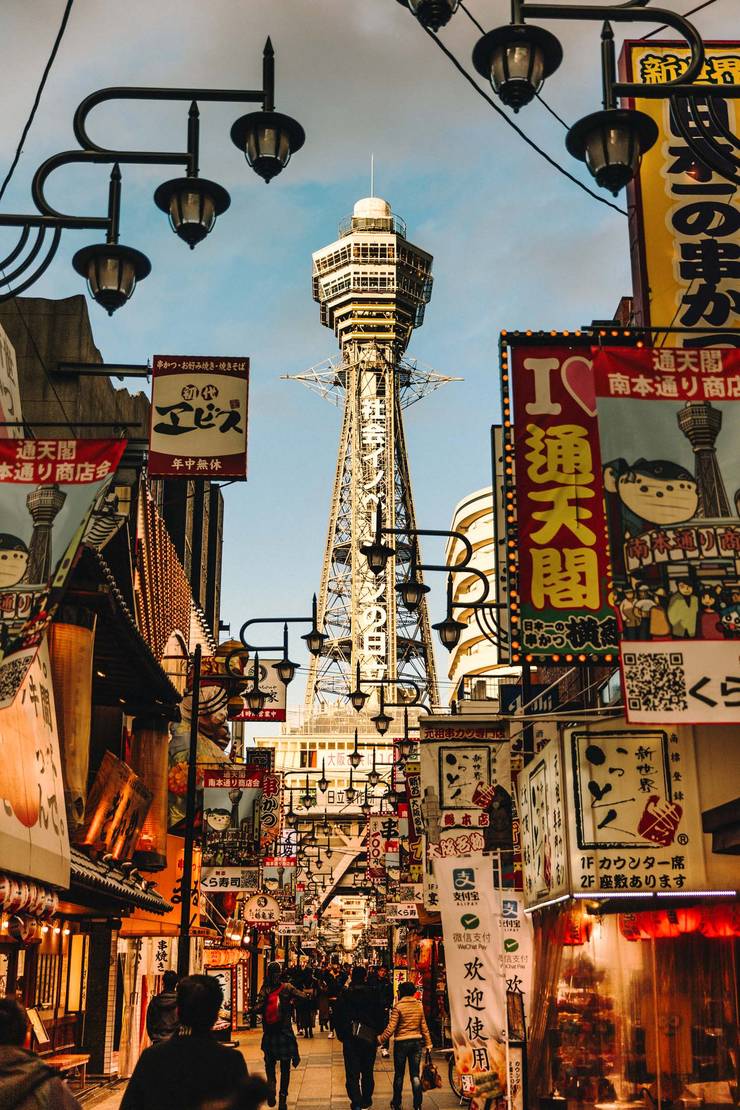
In the intervening years, these fairs have transformed into not only sites for internationally sanctioned self-promotion but also invaluable opportunities for global dialogue and national brand building.
The modern expo sits at the axis of all these elements, providing a forum for entrepreneurs, delegations, visionaries and grand thinkers to participate in a great chorus of ideas and share in a collective optimism. As the world navigates complex challenges – including climate change, economic realignment and digital transformation – these events offer a rare opportunity for nations to showcase solutions and forge cross-border partnerships. Far from being nostalgic relics, they are adaptive hubs that highlight the interconnectedness of our future.
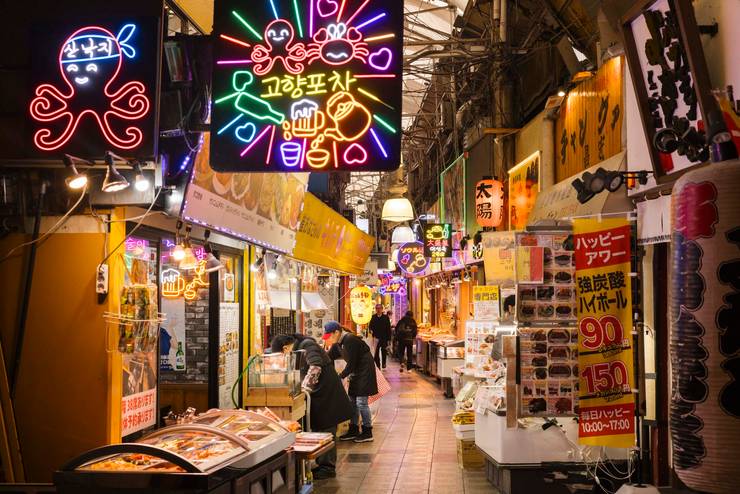
Expo 2025 Osaka will act as a microcosm of the global economy, as emerging industries, from green tech to AI, are put on display for collective scrutiny. Its significance will extend beyond the physical exhibition spaces of Yumeshima island too. This will be where tomorrow’s economic ties are strengthened, trade deals are negotiated and cultural exchange flourishes. And as the geopolitical landscape shifts, events such as Expo 2025 Osaka remain an essential tool for soft power, allowing nations to project influence and attract both talent and investment. In an era when economic diplomacy is increasingly vital, world fairs are not merely spectacles; they are strategic events that help shape the future contours of the global economy.
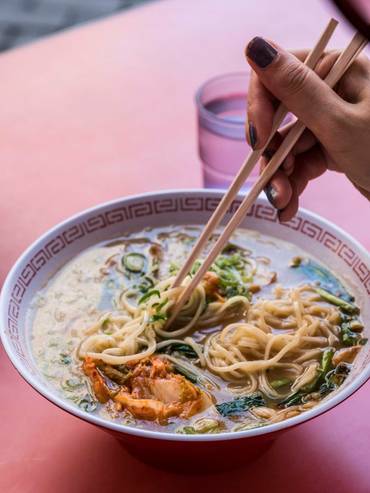

Here, Monocle will celebrate the continuing relevance of the modern expo and explore how deep relationships between nations are forged. We will detail the specifics and synergies of Austria-Japan partnerships, and the ways in which both countries share a heritage across the arts, an economy built on family-owned business and a mutual respect for sustainable entrepreneurship and innovation.
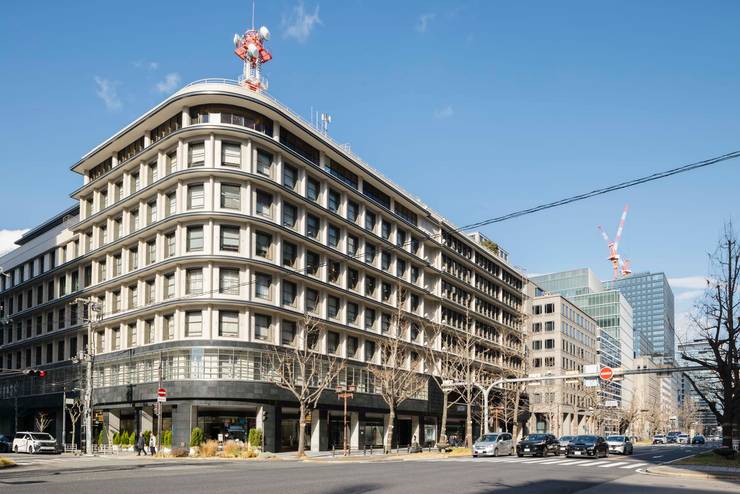
Expos show us who we are and who we can be in the future, both within national borders and beyond them. Listen closely at Expo 2025 Osaka and you might hear a new world being composed.
2
CULTURE SWAP
Time for a new influence?
The 1873 Vienna World’s Fair kick-started a taste for Japanese aesthetics that would influence all aspects of European culture for decades to come. More than 150 years later, could Austria’s elevated presence at Expo 2025 Osaka spark a similar trend?

PICTURES OF A FLOATING WORLD
Visual highlights from 150 years
While the Austria Pavilion at Expo 2025 Osaka will provide a platform for creative dialogue between the two countries, it is simply the latest step in a surprisingly long and rich history of bilateral relations. This friendly long-distance partnership began when decorated naval officer Anton Freiherr von Petz led an Austrian mission to the newly opened Japan. On 18 October 1869, a treaty of trade and friendship was signed, establishing diplomatic relations between the two nations.
Just four years later, the modernising Meiji government, keen to show what the new Japan had to offer, made its first official appearance at an international exposition with the Vienna World’s Fair. It was a high-level production complete with Shinto shrine, Japanese garden, scale model of the great Buddha in Kamakura and a four-metre-wide lantern. The pavilion was greeted with acclaim by thousands of visitors; many Japanese products, such as ukiyo-e (woodblock prints), sold out within a week.
Vienna’s Museum of Applied Arts (MAK) holds more than 200 Japanese objects from the 1873 exposition. “Our collection testifies to Japan’s endeavour for the Vienna World’s Fair,” says Mio Wakita-Elis, curator of MAK’s Asia collection. “A porcelain plate made in Seto, showing a beautiful underglaze Mount Fuji, for instance, has a peculiar format unprecedented in the long history of Japanese ceramics.”
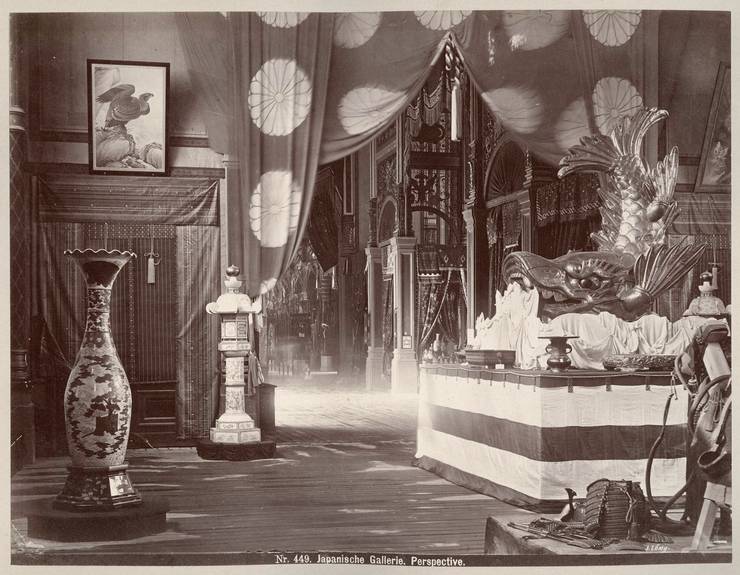
Suitably inspired by such objects, a wave of Japonisme splashed across Europe in the subsequent decades. The ready availability of ukiyo-e helped quickly disseminate Japanese aesthetics among influential tastemakers, the depictions of everyday scenes a modern counterpoint to the high-society portraits that dominated fine art at the time. World-renowned Austrian artists, such as Gustav Klimt and Egon Schiele, were profoundly influenced by the Japanese approach to flat perspectives, decorative patterns and vertical compositions. Shodo calligraphy influenced the thick lines used by designers from the Wiener Werkstätte, while architects such as Otto Wagner introduced Japanese-influenced ornamental designs to the façades of buildings across Vienna. Such similarities were also heightened, says Wakita-Elis, by a shared “love and dedication to the quality of handcraft” between the two nations.
“Designer Felice Rix-Ueno had a unique way of embodying the transculturality of the Austrian-Japanese creative relationships”
More than 150 years after the Vienna World’s Fair triggered a craze for Japanese culture, the Austria Pavilion at Expo 2025 Osaka is hoping to have a similarly influential impact on bilateral relations. While visitors can immerse themselves in the very best of Austrian music, technology and innovation, the pavilion will also spotlight the work of Felice Rix-Ueno, one of the most varied and poetic artists of the Wiener Werkstätte.
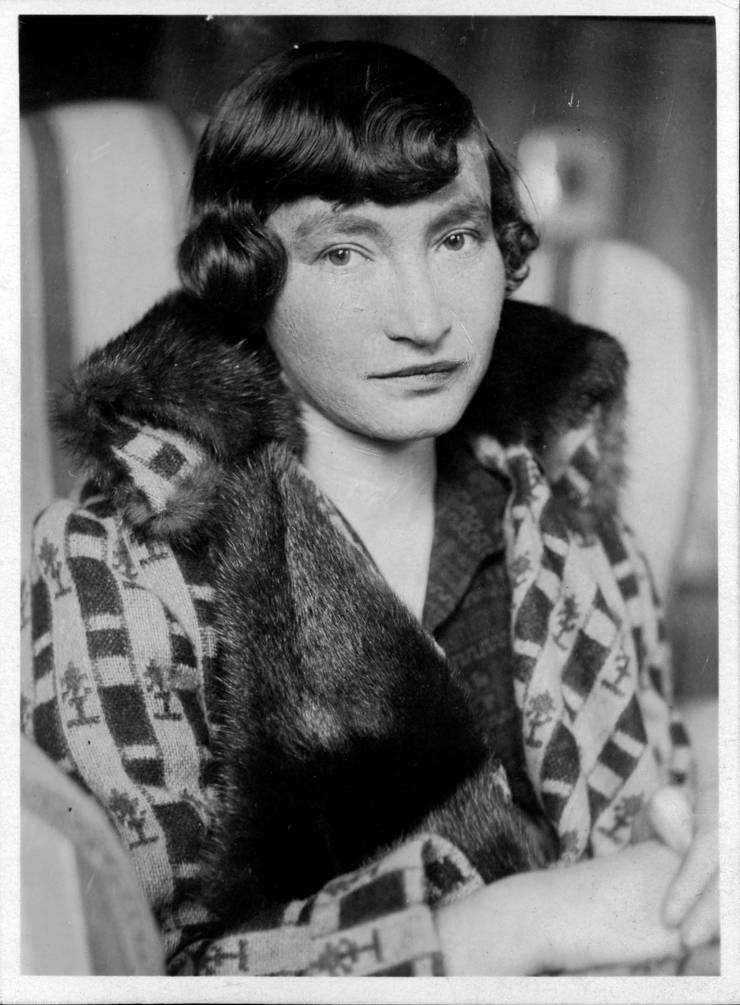
Her enduring design motifs will be seen across everything from the wallpapers and curtains in the lounges to the merchandise on sale in the gift shop. “Rix-Ueno had a unique way of embodying the transculturality of the Austrian-Japanese creative relationships,” says Wakita-Elis. “Since her immigration to Japan in 1925, she was active both in Vienna and Kyoto, teaching Japanese design students at both Kyoto City Art Museum and the private design institute that she and her husband founded in Kyoto for more than 20 years.”
3
COMMON GROUND
Celebrating the similarities
More than just mutual admiration, the strong links between Japan and Austria have been forged over decades, thanks to a shared outlook and vision outlined below. These values are further underlined by the unexpected stories of three key figures who are deeply invested in both nations.
A VALUE PROPOSITION
Four philosophies shared by Austria and Japan
1. DEEPER QUALITIES
Austria and Japan boast significant expertise in mechanical engineering as well as the automotive and semi-conductor industries. These success stories point to an alignment on deeper qualities too: a shared attitude to business that places value on quality, craftsmanship and innovation.
2. INNOVATIVE APPROACH
Both nations value collaboration between academia, business and government institutions to foster innovative ecosystems. This is evident in Japan’s emphasis on public-private partnerships and Austria’s support for its thriving startup ecosystem, which drive the development of future technologies.
3. TRUSTED PARTNERSHIPS
Half of Austria’s businesses are family-run, while 90 per cent of Japanese companies have passed between generations, thousands remaining in family hands for more than a century. Businesses in both nations know that trusted relationships, built over time, are the bedrock of successful entrepreneurship.
4. BUILDING FOR A BRIGHTER FUTURE
By funding cutting-edge scientific research, both nations are making tangible strides towards achieving ambitious environmental targets. Austria applies its expertise in areas such as the storage and conversion of renewable energy, while Japan is committed to putting zero plastic in the sea by 2050.
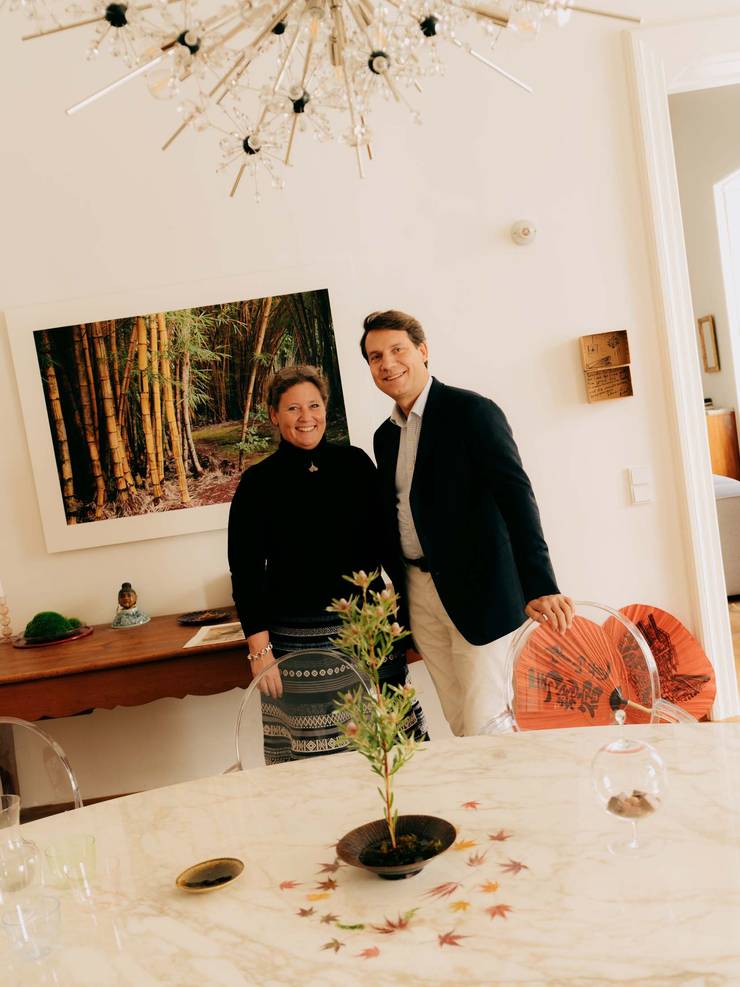
Nicola and Christoph Rath
Crafting links between nations
When Nicola and Christoph Rath met at dance school in the early 1990s, the subject of craftsmanship – let alone sustainability – was scarcely on the global agenda. “It was really niche but we grew fond of that idea, even as our friends made careers in finance,” says Nicola, as the pair settle with a cup of Japanese green tea in their central Vienna flat.
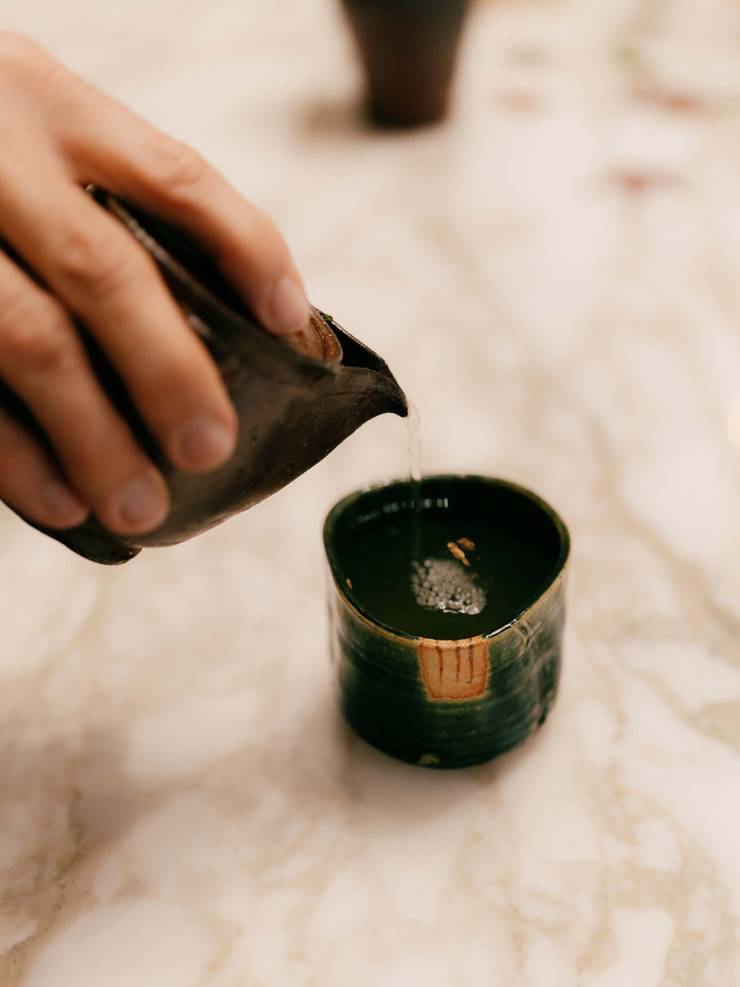
When the Raths launched Meisterstrasse in 1999 in Salzkammergut, working with local craftspeople to connect them to a broader market, they had both the expertise and the pedigree for such an undertaking. Christoph hails from the family behind renowned glassmaker Lobmeyr, one-time purveyor to the Austrian imperial court and a lasting symbol of national artisanship. Yet, even while raising four children, the couple never stopped their quest to discover and represent new talent. Before long, their interests drew them to Asia.
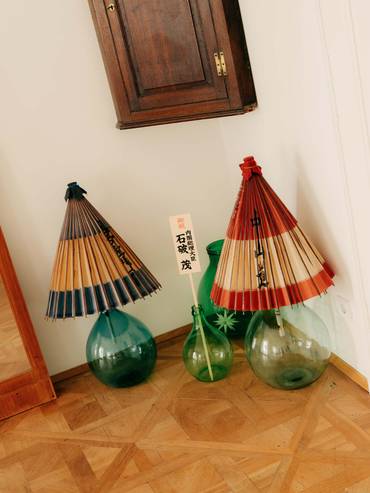

What the Raths admire most about the Japanese is the genuine gratitude when someone takes an interest in their culture. In November, as the couple prepared for Expo 2025 Osaka, they curated an exhibition at the Austrian Embassy in Tokyo that featured the work of ceramicist Josef Wieser, who is renowned for using a traditional Japanese anagama kiln. Initially, the Raths were unsure whether there was a market for an outside take on such a quintessentially Japanese technique. The couple pressed ahead and were vindicated by the response, as the largely Japanese audience took great pride in the ceramics of someone who displayed “such a deep connection to their traditions”. For the Raths, it was proof of the value that they place in finding genuine talents: “At that show in November, Wieser was one of the best sellers.”
Machiko Soshin Hoshina
Reviving ceremonial porcelain
Having hosted Japanese tea ceremonies for almost 40 years, Machiko Soshin Hoshina has a great empathy and appreciation for the tools of her trade. During one such ceremony at the Austrian ambassador’s residence in Tokyo in 2015, she was “totally shocked” to hear about a vast collection of broken porcelain, hidden from view in Loosdorf castle. These valuable ceramics, including many rare pieces of Old Imari from Japan, had been amassed over generations, before being destroyed in 1945 by Russian soldiers. Rather than discard the shards, the family held onto them for 70 years, treasuring their memory. That appreciation for the porcelain’s imperfect condition chimed with Hoshina’s innate understanding of the Japanese term wabi-sabi. “The family had a good understanding of the ideas behind it without knowing the word,” she says.
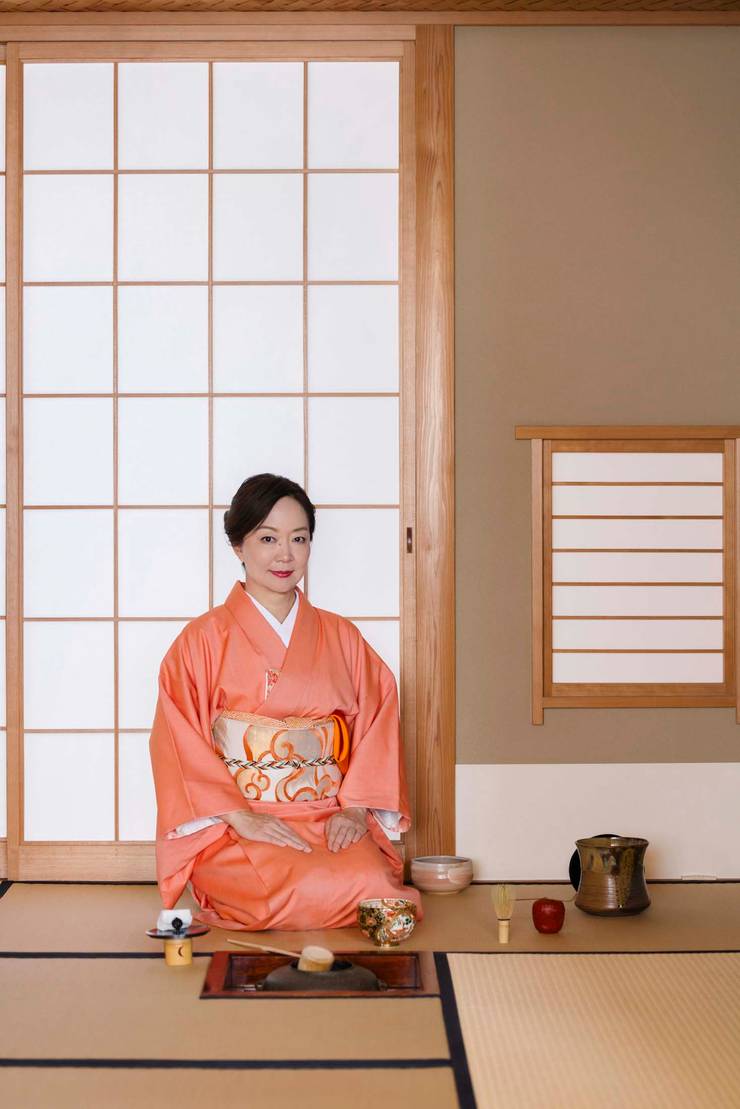
So began the Reviving Old Imari Project (ROIP), which used ancient techniques to restore the shards to complete forms and culminated in a 2020 exhibition at Tokyo’s Okura Museum of Art. The ROIP involved many trips to Vienna, where Hoshina felt at home among the classical music and Sachertorte. “Japan’s first exposure to the West was through Austria so that image of European culture was already familiar to us,” she says.

With the restoration complete, Hoshina is determined to ensure that the collection doesn’t return to obscurity. The ROIP will continue its work with a programme of events, including a tea ceremony at Expo 2025 Osaka. “I’m so grateful that many people are still involved with this project,” she says. “But if I stop now, then it might be forgotten.”
Florian Wiltschko
Japan’s first Austrian Shinto priest
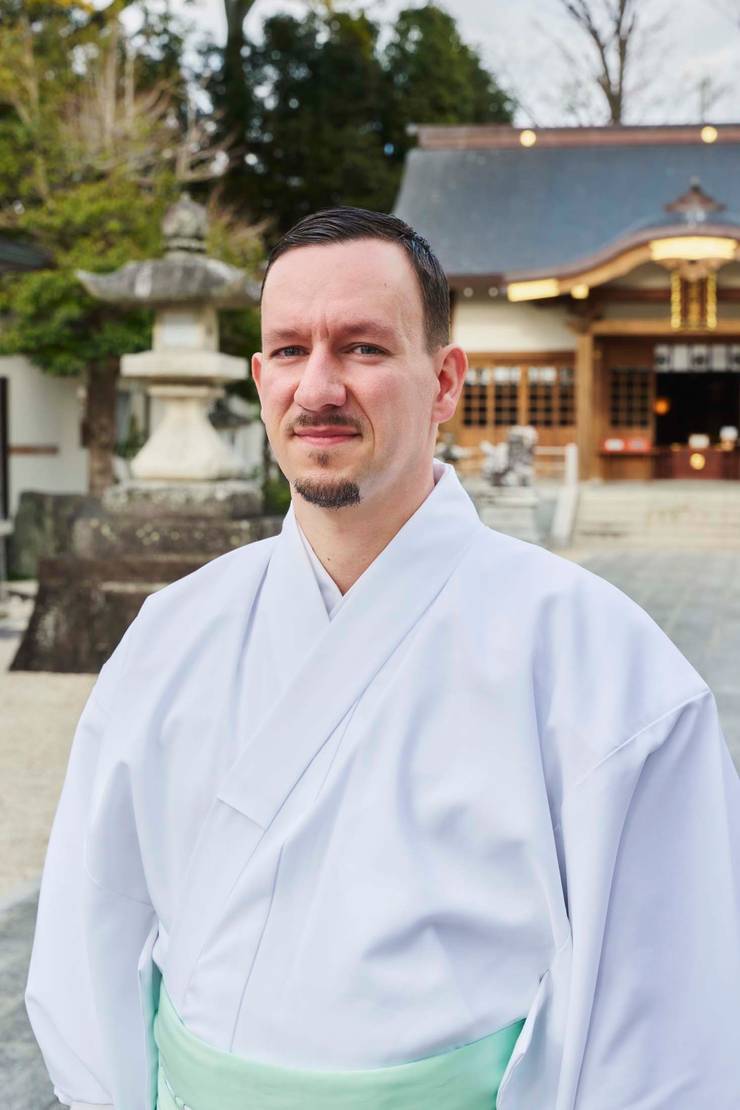
Aptly for someone who straddles two cultures, 37-year-old Shinto priest Florian Wiltschko prizes a measured approach to life. “A balance of knowledge and experience is the most essential part of being a professional,” he says. “One of the interesting parts of my job is finding ways to communicate history in today’s day and age.”
Born and raised in Linz, Austria’s third-largest city, Wiltschko was drawn to traditional Japanese culture from an early age. Visiting the country for the first time as a teenager, his natural curiosity led him to the world of Shinto, Japan’s indigenous faith, wherein he discovered architecture, costumes, tools and customs unchanged for centuries. “The culture felt truly alive,” he says. “I was fascinated to see things still being used as originally intended, rather than being confined to museum showcases.”
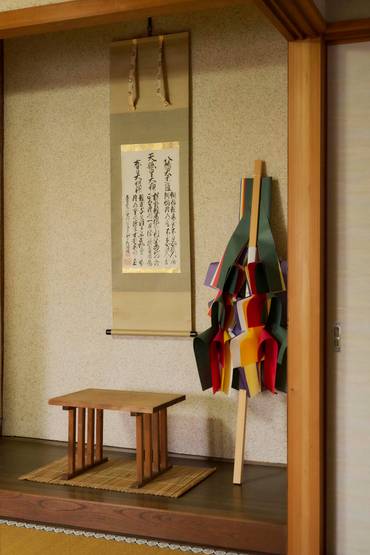
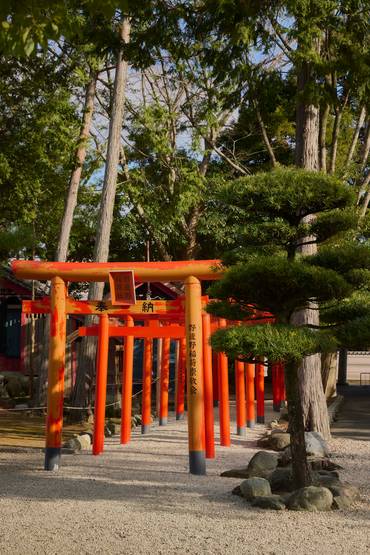
After tertiary studies in Vienna, Nagoya and Tokyo, Wiltschko started as an
assistant priest at Shibuya’s Konnoh Hachimangu shrine in 2012. Four years later, he relocated to Tsu, a city in the Mie prefecture, becoming a priest at Hisai Hachimangu. Responsible for the shrine’s daily operations and rituals, he is thought to be the first accredited, non-Japanese kannushi (Shinto priest) working in the country.
“There are currently about 80,000 shrines across Japan, each with a story of its own,” says Wiltschko. “My main role is to continue the 355-year history of Hisai Hachimangu,” he adds with pride. “In Japan, particularly at shrines, there is a concept known as naka-ima. It stresses the importance of the present moment: we serve as a link between our ancestors and descendants.”
4
IDEAL PARTNERS
In culture and business
World fairs provide a welcome opportunity to build new connections. As Expo 2025 Osaka gets underway, we celebrate the breadth and depth of Japan’s innovative international collaborations with top companies and industry leaders, from aerospace startups to pioneering wine importers.
Edwina Hörl
Respect for Tokyo’s fashion scene
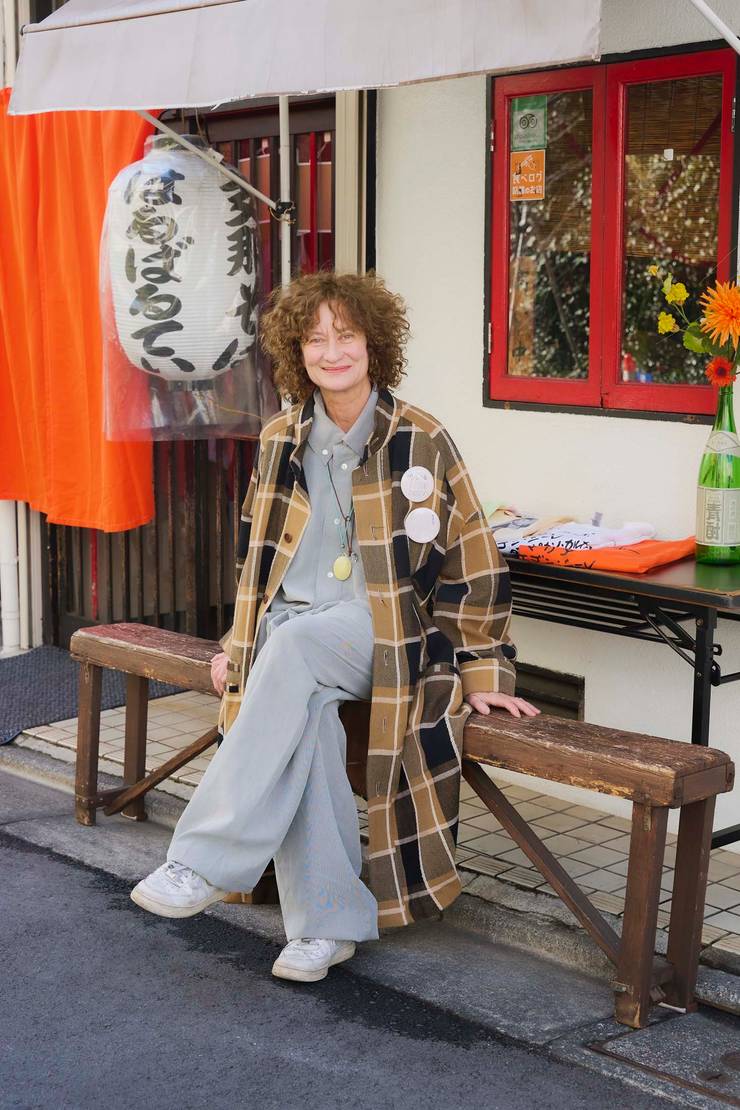
Born in Salzburg and based in Tokyo, Edwina Hörl’s eponymous label is founded on her love of Japanese fashion. Encouraged by a grant from the Austrian government, she began working under Yohji Yamamoto in 1990 and founded her studio in Vienna six years later.

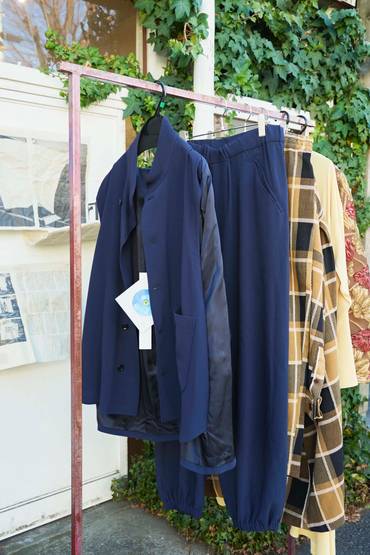
How did you get your break?
My career isn’t exactly normal. I didn’t go to a fashion school; I’m self-trained. I was teaching children with disabilities when I heard that the Austrian Federal Ministry of Arts was introducing a prize for experimental fashion design. Fashion was finally being recognised as a fine art. I was so surprised that I won.
Why did you return to Japan in 2000?
I was just so impressed by Tokyo. It was the 1990s, the city was in a boom period. Everything was moving, 24 hours a day. And the fashion! I’d never seen people walk down the street dressed in complete outfits from Comme des Garçons or Maison Margiela. It was like a different world. I had to come back.
What have you learned in 25 years as a business owner in Japan?
Austrians and Japanese share a humility. Unlike many countries, Japan is not an “I” society, there is less individualism. Respect is very important, so is a strong community. It’s not just about pushing yourself forward at the expense of others. There’s a natural alignment.
Kabukiza Theatre
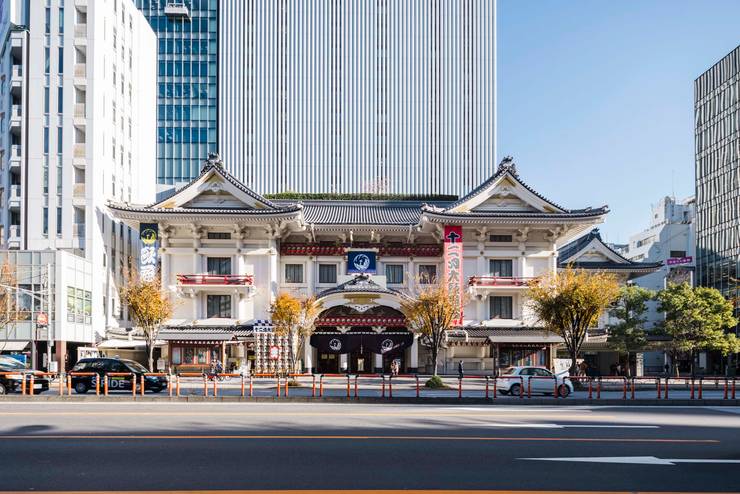
High-performance technology
Tokyo’s Kabukiza Theatre is one of the world’s most flexible performance spaces, thanks to a revolving 18-metre stage – the largest in Japan. Traditional kabuki shows need quiet transitions so architects turned to Getzner Werkstoffe, global innovators in vibration isolation. The Vorarlberg-based subsidiary of the 200-year-old industrial giant Getzner, Mutter & Cie created bespoke foundation isolation and full-surface floating floors that let the 360-tonne stage move as effortlessly as a seasoned kabuki actor.
Dassai
Symbolic sake
If brewing is an art form, the team at Asahi Shuzo are the Old Masters. With more than ¥6bn (€37.5m) of exports, the Yamaguchi-based company tops a list of sake producers bringing this Japanese beverage to a global audience. Even with such large volumes, the soaking of the rice and the making of the koji yeast is still done by hand, while cutting-edge equipment is employed to monitor alcohol and acidity levels at every step of the brewing process. This combination of careful craftsmanship and technical innovation is the key to Asahi Shuzo’s success and its latest project takes that ingenuity even further.
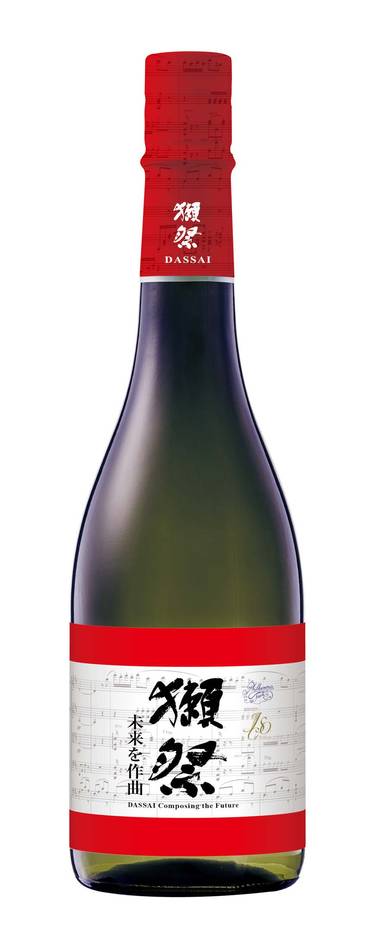
If brewing is an art form, the team at Asahi Shuzo are the Old Masters. With more than ¥6bn (€37.5m) of exports, the Yamaguchi-based company tops a list of sake producers bringing this Japanese beverage to a global audience.
Even with such large volumes, the soaking of the rice and the making of the koji yeast is still done by hand, while cutting-edge equipment is employed to monitor alcohol and acidity levels at every step of the brewing process.
This combination of careful craftsmanship and technical innovation is the key to Asahi Shuzo’s success and its latest project takes that ingenuity even further.
Nodding to the passion for skill and beauty that unites Austria and Japan, the drinks company is exposing a batch of its world-renowned Dassai sake to Johann Strauss’s “Lagoon Waltz”. The Austrian composer is beloved in Japan and it is hoped that his music will aid the fermentation and maturation of this special-edition Dassai – Composing the Future sake.
The symbolism doesn’t end there.
The version of this piece, created by violinist Andreas Grossbauer’s Philharmonic Taste project, is an amalgam of two recordings played by Japan Century Symphony Orchestra and fellow members of the Vienna Philharmonic. As one would expect from classical musicians, the timing of this collaboration is impeccable.
It is Strauss’s bicentenary in 2025 so the Dassai – Composing the Future sake will make for the perfect pairing. Let’s raise a glass to that.
Pez
Keeping Japan sweet
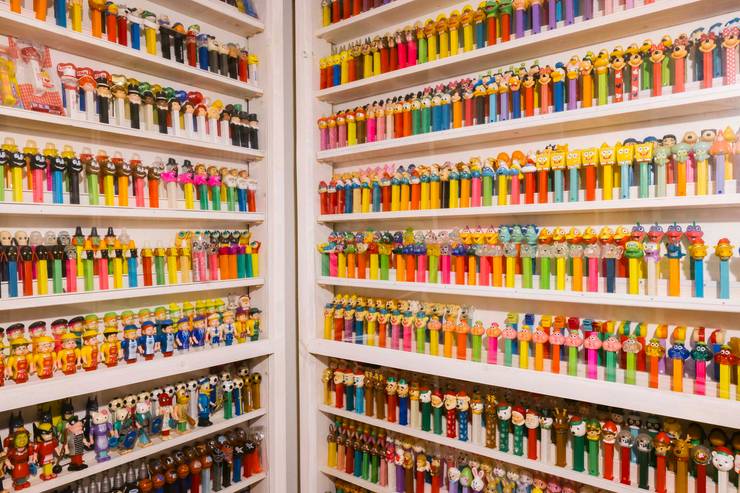
Designed by an Austrian engineer and given a whole new lease of life by ardent Japanese buyers, Pez candy dispensers are the ideal meeting point for Austrian ingenuity and Japan’s huge collectibles market. About 70 million of the company’s iconic plastic devices are manufactured every year and sold in more than 80 countries. Japan is one of the most important markets – the largest outside of Europe and the US – a fact that has enabled Pez to cement deep relationships with national icons including Sanrio’s Hello Kitty (who is an official Expo 2025 Osaka ambassador).
Rosenbauer
Fireproofing the future
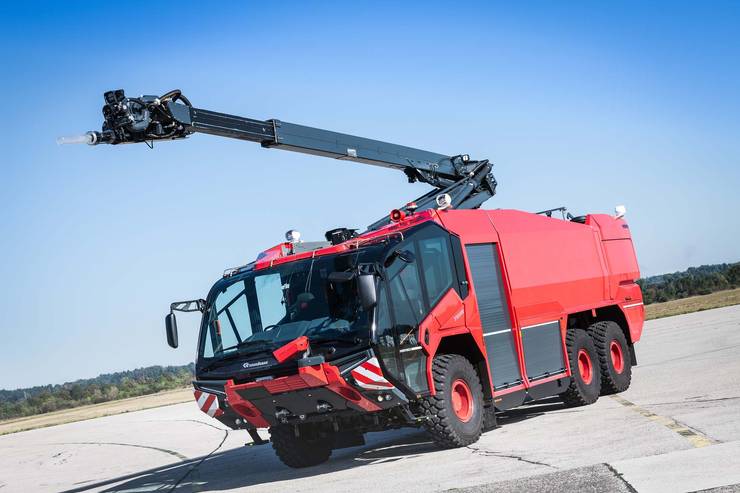
Besides producing world-leading firefighting vehicles, Austria’s Rosenbauer prioritises foresighting, investing in trendmaps and e-mobility solutions to proactively shape the future of the fire service. Japan is the company’s second largest market. The association began when Osaka’s Kansai International Airport placed an order for Rosenbauer’s first Panther truck in 1994. Today more than 200 of Rosenbauer’s ARFF (aircraft rescue and firefighting) vehicles are a standard feature across airports in Japan.
Orbspace
Ready for takeoff
After Aron Lentsch launched his Austria-based aerospace startup Orbspace in 2006, he soon realised the benefits of establishing a second office in Tsukuba, a science-and-tech hub outside Tokyo. “Governmental support for space-related business in Japan is very strong,” he says. Orbspace is developing a reusable rocket system for private space flights, so the fact that Japan considers space tourism in the same category as space exploration allows greater scope for funding. Lentsch divides his time between Austria and Japan, acting as a “bridge” between the two countries. “There is so much opportunity,” he says, citing a natural alignment of work ethic and values, combined with Japan’s bold ambitions in the space sector and Austria’s innovative streak. Cooperation between the two countries – and more broadly between Europe and Japan – is, he says, the launchpad for mutual success.
AWA INC
Bringing a bottle
Based in Nishinomiya, near Osaka, AWA Inc imports about 100,000 bottles of Austrian wine per year. Norbert Tesch and his team will be catering the Austria Pavilion at Expo 2025 Osaka, introducing their wines to a global audience.
How did you begin importing to Japan?
I made friends in Japan who invited me to stay with them. My parents sent some Austrian wine for Christmas and my Japanese friends said “This wine is nice, if it was sold in Japan I would buy it”. My first container arrived in May 1990.
Why does Japan like Austrian wines?
When you go to a restaurant with friends and everybody orders different food, it is hard to find a wine that will suit everyone. Austrian wines like Grüner Veltliner will always go very well with Japanese food because it is not so spicy and there are plenty of fish and vegetables.
Is part of your role educating people?
Yes. Every month, we have wine tastings in different cities, mainly in Tokyo but also all over Japan. These are important because wine is not so easy to sell without doing tastings. If people don’t know something, they just won’t buy it.
Xela Robotics
The Midas touch
Robots aren’t quite yet tying our shoelaces, but Xela Robotics is doing all it can to change that. The Tokyo-based company’s latest product is uSkin, a high-density tactile sensor that can give robots a human-like sense of touch. The possibilities are endless: medicine, construction and, yes, simple household tasks. Xela Robotics was cofounded in 2018 by Vienna-born CEO Alexander Schmitz. “Japan is one of the top countries for robotics,” he says. His switch from Austria to Japan was smooth, given that both nations “produce high-quality products and have a strong work ethic”. They also share national characteristics; they are, says Schmitz, “polite people with a rich history and many common interests”. Robotics being one of them.
5
BUILDING THE FUTURE
New design ambitions
The centrepiece of any country’s expo presence is the self-built pavilion. Architects and construction teams behind three key structures at Expo 2025 Osaka share the precision craftsmanship and cutting-edge techniques that will bring complex themes and ambitions to life.
AUSTRIA Pavilion
The Austria Pavilion at Expo 2025 Osaka is a truly international collaboration, designed by Vienna’s BWM and assembled by Tokyo-based Shinohara Shoten. Appropriately for the country of Mozart, Schubert and Strauss, music provides the framework for the structure. Riffing on the expo theme of “designing future society for our lives”, Austria’s contribution will focus on the idea of “composing the future”.
The structure’s defining feature will be a sweeping wooden spiral, designed to resemble a line of musical notes. It is a nod to Austria’s classical music heritage.
In practice, this means that the exhibition hall will be divided into three thematic areas: relationships, people and ideas. Each section will see innovative technologies bring to life the country’s achievements across sectors as varied as life sciences, AI, mobility and the creative industries. The staging will build to a crescendo in the final section. The audio and visuals are impacted by the responses to interactive questionnaires that allow visitors to share their values and priorities, shaping the room in a reflection of the collective will. The musical programme, courtesy of Mozarteum University Salzburg, will provide a sweet soundtrack to Austria’s vision of the future – one that is built on a respect for tradition coupled with a bright optimism for harmony between man, nature and technology.
An early rendering of the Austria Pavilion at Expo 2025 Osaka BWM founder and partner Johann Moser and project lead Hubert Meyer The pavilion’s looping structure is designed to resemble musical notation
BWM Designers & Architects
Ahead of the curve in Vienna
“A cliché is a very productive thing to use,” says Johann Moser, the M in the name of celebrated Vienna architecture studio BWM. This idea was front and centre when the firm set about designing the Austria Pavilion. The structure’s defining feature will be a sweeping wooden spiral, designed to resemble a line of musical notes: the opening bars of “Ode to Joy” by Ludwig van Beethoven. The curve of the spiral – made from Austrian spruce and meticulously assembled on-site in Japan – is intended to mimic the movement of a conductor’s baton as an orchestra is led to a crescendo.
Cultural ties between the two nations stretch back to the 19th century. After being largely shielded from outside influences, Japan was beginning to open to the world, driven by a wave of political and cultural modernisation. At the Vienna World’s Fair in 1873, Japanese emissaries presented their nation’s arts and crafts, along with – in another first – soya beans. These caught the eye of an Austrian botanist, Friedrich Haberlandt, who would go on to play a key role in popularising soya-based foods in Europe. But that was not the only connection. Four years before the Vienna World’s Fair, as a gesture of goodwill, Austrian emperor Franz Josef gifted a piano – a Bösendorfer, no less – to Japan’s emperor Meiji.
Sadly, that piano no longer exists but another Bösendorfer will be displayed in one of the pavilion’s three rooms (Bösendorfer has been owned by Japan’s Yamaha since 2008, yet its pianos are exclusively manufactured in Austria). While the other two rooms celebrate Austria’s achievements – including scientific breakthroughs and the social welfare system – the emphasis in this third room is cultural exchange, the essence of Expo 2025 Osaka. “World expos started as competitions between nations, but that’s no longer the case,” says Moser. “These days, every invention, especially in technology, is globalised.”
So, while showcasing the best of Austria, as any national pavilion should, BWM’s design also portrays the country as an equal partner in a fruitful and longstanding cultural dialogue with Japan. Perhaps more crucially, it also reveals Austria as a key player in a broader, interconnected world – one collectively seeking solutions to an uncertain future.
An early maquette of BWM’s design for the Austria Pavilion A rendering of the pavilion’s music-themed exhibits Scan the QR code to find out more about the Austria Pavilion at Expo 2025 Osaka
Women’s Pavilion
Yuko Nagayama Architecture with (re)purpose
The fact that expo pavilions are, by their nature, ephemeral makes their sustainable credentials even more important than more permanent constructions. Circularity – both in form and function – will be at the heart of the Women’s Pavilion at Expo 2025 Osaka. Its geometric, wooden kumiko façade is assembled without the use of nails. The materials will be repurposed from the Japan Pavilion at Expo 2020 Dubai — and the future possibilities for reuse continue.
The Women’s Pavilion will be a courtyard-like space with a long external corridor, typical of the machiya style. Tokyo-based architect Yuko Nagayama was inspired by the narrow Expo 2025 Osaka site. She wanted the structure to convey the planet and its regenerative processes. The steel beams will also be repurposed, as the foundations will employ a low-carbon alternative to concrete developed in Japan that reduces emissions during construction by about half. “The Women’s Pavilion is a testament to the possibilities of reuse,” says Nagayama. “The plants here were collected from the mountains near Osaka and they will be returned there after the Expo.”
And much like the pioneering “Women’s Work” exhibition at the 1873 Vienna World’s Fair, this new pavilion aims to create a legacy that can be shared with future generations. Its true success will not be felt when Expo 2025 Osaka closes in October, but decades from now when the impact of these ideas has reverberated around the world.
The Women’s Pavilion is made from wood salvaged from a previous expo The 1873 Vienna World’s Fair pavilion that housed the “Women’s Work” exhibition Architect Yuko Nagayama in her Shinjuku offices
Japan Pavillion
NIKKEN SEKKEI
Designing the circle of life
At any world expo, the host country’s pavilion is guaranteed to be a spectacle. For Expo 2025 Osaka, the Japan Pavilion goes one step further: it’s alive. Inside the grand wooden ring that encircles the site on the artificial island of Yumeshima, any waste created in the pavilion will be given over to a waiting army of microorganisms, which will decompose the garbage and turn it into a biogas that will power the pavilion. It’s a circle of life, found within the round walls.
The Japan Pavilion, designed by Nikken Sekkei, will be a physical manifestation of a holistic philosophy. The question at the heart of the design is a simple one: “What lies in the place between lives?” The basic structure is circular, consisting of hundreds of upright wooden planks. Visitors will see between and around the cross-laminated timbers, which are spaced far apart enough to allow clear lines of sight. The gaps symbolise the spaces between lives. Three entrances and exits will add to the theme of circularity, of constant flow, of a lack of a beginning and end. It’s an invitation to contemplate the liminal, the in-between.When you step inside, the design elements will continue to speak to these themes of connection and circularity, right down to the uniforms worn by the attendants. Designed by Yuya Nakata, the unisex designs will pay homage to the traditional Japanese kimono while encouraging flexibility and individuality. The obi belt can be tied in different ways, allowing each wearer to make it their own.
Nikken Sekkei’s design speaks to Expo 2025 Osaka’s themes of connection and circularity The structure is designed to be easily disassembled for reuse in buildings across Japan after the Expo is over
SHINOHARA SHOTEN
Assembling the spiral in Osaka
Founded in 1974, Shinohara Shoten started out as a seller of lumber and building materials. As one of the five businesses that now comprise the Tokyo-based Shinohara Group, it specialises in wooden architecture and provides structural planning and design, material procurement, pre-cut building manufacture and construction services. Succeeding his father and company founder in 2012, second-generation president Yuichi Shinohara sought to roll out the company’s residential expertise in other sectors.
“Around that time, non-residential wooden architecture was gradually increasing around the world through the use of ‘glulam’ [glued, laminated timber], mass timber and so on, but in Japan it was limited to residential projects,” says Shinohara. A decade later, the company has completed a range of office, school and stadium projects, most notably working on a timber roof for the Japan National Stadium, designed by Kengo Kuma for the 2020 Summer Olympics in Tokyo. “The successful completion of these projects has proved valuable but, while there is an abundance of wood, we also have the technology required to work it, which can be harder to find,” he adds.
As a member of the Austria Pavilion for Expo 2025 Osaka, Shinohara Shoten will lead the on-site installation of the structure’s wooden ribbon, while also sharing its wide-ranging expertise with the project team. The requirement for the design to meet both European and Japanese building standards saw designers working closely with lead structural engineers, Vienna-based Werkraum Ingenieure, to ensure compliance. The design was refined through numerous iterations over almost 12 months.
Upon completion of the design, the 12-metre-high ribbon structure – a spiralling lattice made from Austrian spruce – was manufactured by Graf-Holztechnik in Horn, Lower Austria, before being disassembled and transported to Japan. By the time it arrived in Kobe in December, Shinohara Shoten’s plans for the installation at Yumeshima were firmly in place. In an ideal world, the structure would be constructed in the order of pylons, wooden elements then stainless-steel mesh. However, the combination of a short timeline and a site area that was just 8 metres wide required the structure to be built literally from the ground up. Even the six pylons, each measuring up to 16 metres in length, were transported in segments for assembly on-site. Their arrangement within the spiralling form, fixed to the ribbon at multiple points, left little margin for error and required specialists to position the tips with millimetre-perfect precision.
Having worked closely alongside teams in Austria and Japan, Shinohara believes the realisation of the project’s architectural vision will truly be a sight to behold. “Once the pavilion is complete, I want people to stand back and take in the whole scene: a work of art standing among the bustling crowds,” he says. “Seeing the design for the first time, we thought that it’d be impossible. Creating something like this is incredibly challenging, especially with wood, so when you take it all in, it will be truly magnificent.”
Shinohara Shoten president Yuichi Shinohara and project lead Yoshinori Yajima
6
OSAKA
A Monocle guide
Japan’s third largest city is a culinary capital, renowned for its friendly welcome, curious outlook and merchant spirit. Venture beyond the Expo 2025 Osaka site on Yumeshima island to discover eclectic fashion, divine wine selections and retailers that champion a heritage of craft.
Maishima Incineration Plant
Architecture in full colour
With its gold-domed tower and colourful façade, Osaka’s Maishima Plant could be mistaken for an offshoot of the nearby Universal Studios Japan theme park. In truth, this waste incineration facility is one of the city’s most eccentric architectural treasures. Completed in 2001 to designs by the late Austrian artist Friedensreich Hundertwasser, the plant sits across the bridge from the Expo 2025 Osaka site on Yumeshima island. Several floors are open to visitors with tours available, allowing a chance to contemplate a more sustainable future.
Wunder
Modern vintage style
“I’m not really interested in designs that can be understood at a glance,” says Wunder founder Makoto Sato. “The craftsmanship of the fabric, the beauty of the pattern; clothing is an industrial product, so I want to highlight such qualities.” Hidden inside a vintage building, Wunder’s pared-back interior provides an ideal canvas for menswear curated with a discerning eye. Japanese brands feature prominently, with Heugn shirts and Batoner knitwear joined by pieces from the likes of Aton and Ssstein. Bags from Sagan Vienna, the Austrian brand founded by Tanja Bradaric and Taro Ohmae, feature modern, minimal designs in leather and nylon. “It can be hard to find a quality men’s bag, so many people end up purchasing from maison brands, even though they wear contemporary labels,” says Sato. “I want to show Sagan Vienna as a contemporary brand that can match them.”
Austrian wines in Osaka
Find the perfect pairing
Whether you want a fresh take on Grüner Veltliner or a lesser-known natural wine, these spots take pride in pairing Austrian wines with signature local menus.Tucked away on a side street, Fujimaru Higashi-Shinsaibashi’s wine shop has bottles from around the world. Customers can take one home or enjoy pairings by the glass in the intimate diner upstairs. “When it comes to Austrian wines, the cleanness complements a wide range of dishes,” says manager Sayaka Ukaji. In Nishi Tenma, chef-turned-sommelier Kei Tashiro has been exploring the possibilities of modern Chinese cuisine and wine at Chi-Fu since 2011. An experimental approach to merging flavours extends to the wine list. “Austria isn’t a large country but it’s so diverse,” says Tashiro. “There are so many Austrian producers who truly understand coexistence with nature.” For more than four decades, Rokukaku-tei has paired kushi-katsu (deep-fried skewers) with handpicked wines. Located next to the bustling Kuromon Market, the restaurant’s 20-piece course runs the full spectrum of Japanese ingredients while the wine list features FX Pichler, Franz Hirtzberger and other Austrian producers. “Kushi-katsu is deep-fried in oil, similar to some Austrian dishes, so these wines feel like a natural match,” says Yoshio Nakayama.
B-Tech Japan
Sound advice
The epitome of Viennese craftsmanship for almost 200 years, Bösendorfer pianos are a rare commodity with production limited to about 300 instruments per year. Founded in 2007 by Seiko Kida, a professional piano tuner, B-Tech Japan is a shop that specialises in the sale, tuning, maintenance and repair of these world-renowned pianos. “Bösendorfer is one of a kind, producing a unique sound unrivalled by other manufacturers,” says Kida. “As a technician, working with such instruments is the ultimate joy.” This signature sound, amplified by century-old Austrian spruce and exquisite craftsmanship, can be properly experienced in person at B-Tech Japan’s in-store rehearsal room. The studio-style space can be booked for individual practice sessions, while local and international artists also stage special performances to an intimate audience.
Travel connections
Flights of fancy
In 1873, Japanese visitors to Vienna World’s Fair would have set aside several weeks to complete the 9,150km trip. Thankfully, it is much quicker and comfier today. Austrian Airlines operates non-stop return flights between Vienna International and Tokyo Narita, while Japan’s All Nippon Airways flies to and from Tokyo Haneda. Both connect to Osaka International.
Riedel Osaka
Bespoke glassware
Opened in 2022, Riedel Osaka presents the full spectrum of the world-renowned Austrian glassmaker’s grape-varietal-specific glassware. “Riedel works with professionals to find the shape that enhances the enjoyment of a particular wine,” says Kansai retail manager and sommelier Yoshifumi Kinoshita. “We have created a place where customers can experience how a glass can influence taste and aroma.” Regular wine-tasting workshops are held in-store, while events with winemakers from across Japan highlight regional produce and forge deeper connections. In addition to the popular daiginjo sake glasses, special releases include an Osaka-exclusive addition to the Haku series, a collaboration with Kanazawa gold leaf-maker Hakuichi.

